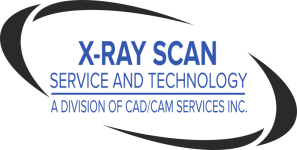X-Ray Film Scanners and Digitizers, X-Ray Film Scanning Services and Software
How Digital X-Rays Enhance Collaborative Health Care
posted Jun-17-2015Small imaging centers may not see the advantage to adopting digital medical imaging technologies. Instead, they often see only the initial expense of the change, both in actual dollars spent and time lost during the change. Despite the fact that patient diagnosis and care improves with digital technologies, the challenges for small providers often seems overwhelming. And, indeed for the novice, the need to maintain consistent retrieval performance, ensure data backup and disaster recovery, maintain HIPAA compliance while managing normal operations is mind-boggling. Given the sheer complexity of these operations, made even more daunting when focused on the large file sizes and numbers of images that image intensive practices must manage, it’s no wonder that many small imaging centers have remained entrenched in film technologies.

Whether your organization is upgrading an existing, on premise PACS scanning X-rays and going digital for the first time, consolidating systems into a vendor neutral Cloud is something to consider in order to improve your collaborative health care. By transforming your medical imaging strategy to a cloud-based flexible, scalable, end-to-end solution that meets your Imaging requirements for performance, security, and ease of management you can enable authorized physicians to access patient records and images no matter where they’re located.
The sharing of X-rays and reports via the Cloud is also an efficient way to keep referring physicians in the loop after they’ve sent a patient to another doctor. On a more practice-based level, a doctor’s performance can actually be assessed by the quality of his or her communication with other physicians, and the Cloud can provide a tool for measurement.
The Cloud also has positive risk management implications. From a risk management perspective, the lack of a hand off when physicians are going on and off duty and the failure to document physician-to-physician communication can be a huge problem, which has patient safety implications. The Cloud can facilitate collaboration and teamwork, no matter where members of the team are located.
Benefits of Medical Imaging Solutions in the Cloud
The Cloud provides platform independent access to images, reports, and other documents, thus minimizing the limitations of a legacy based approach to radiology image and information sharing. In addition, medical imaging solutions that reside in the cloud:
- Reduce storage costs and information management burdens
- Allow viewing regardless of the modality that created the images
- Is scalable and remains accessible as the amount of data generated and saved increases over time
- Reduce the need to buy new storage systems and run them in house
- Eliminate upfront acquisition expenditures as well as ongoing operational expenses such as IT staff salaries, power to run and cool the systems, and purchases of backup and disaster recovery infrastructure
- The cloud service provider ensures that the medical images are saved, secured, and protected and, most importantly, accessible to the health care organization
- Monthly subscription based on use Enhance diagnostic capabilities and improved patient care
- Positive impact on health care service delivery
- Consistent retrieval performance, data backup and disaster recovery operations
True collaboration and more is available when your health care facility looks to the Cloud for medical imaging solutions. Whether your practice has digital X-rays that need to be incorporated into an EMR, film X-rays that need to be digitized, or you just want to explore Cloud PACS, X-Ray Scan can help.

